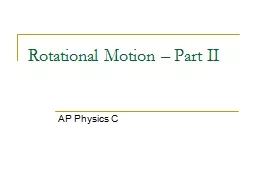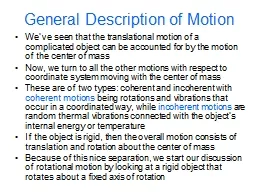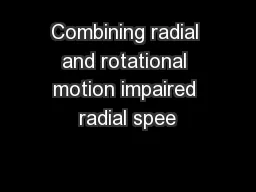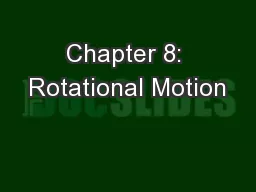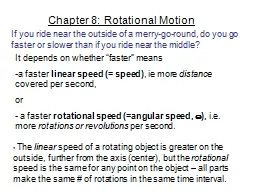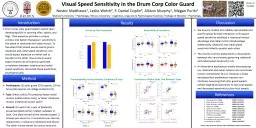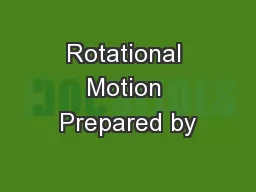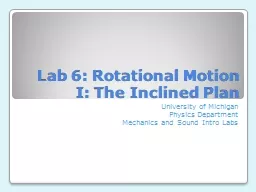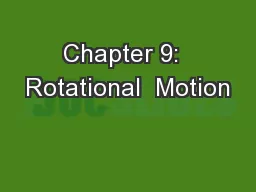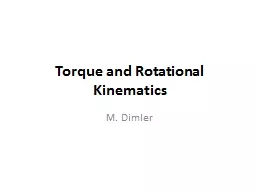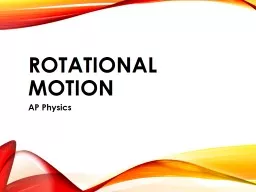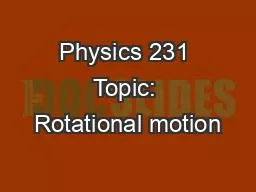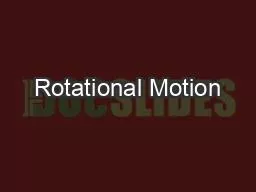PPT-Rotational Motion – Part II
Author : alida-meadow | Published Date : 2017-06-10
AP Physics C Torque So far we have analyzed translational motion in terms of its angular quantities But we have really only focused on the kinematics and energy
Presentation Embed Code
Download Presentation
Download Presentation The PPT/PDF document "Rotational Motion – Part II" is the property of its rightful owner. Permission is granted to download and print the materials on this website for personal, non-commercial use only, and to display it on your personal computer provided you do not modify the materials and that you retain all copyright notices contained in the materials. By downloading content from our website, you accept the terms of this agreement.
Rotational Motion – Part II: Transcript
Download Rules Of Document
"Rotational Motion – Part II"The content belongs to its owner. You may download and print it for personal use, without modification, and keep all copyright notices. By downloading, you agree to these terms.
Related Documents

